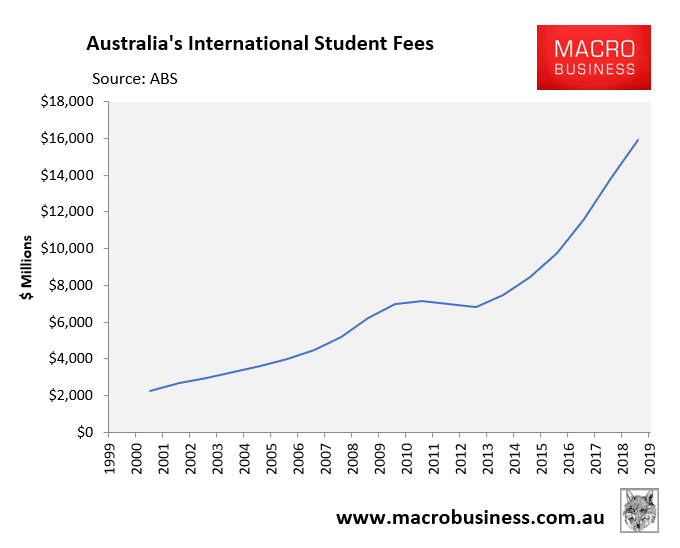Honi Soit has published an article on the rampant workplace exploitation of international students by employers usually of the same nationality:
For those on student visas, visa condition 8105 mandates that international students are only allowed to work up to 40 hours per fortnight while their course is in session. Whilst grappling with costly international student fees and living expenses, many international students struggle to find work due to their lack of Australian work experience, language difficulties, lack of local contacts and restricted working hours. Without other options, many students accept employers’ offers to work for more hours, but at below minimum wage – usually cash-in-hand.
Rather than occurring at big companies like 7-Eleven, the majority of this exploitation takes place in small businesses, especially in the retail and hospitality industry. In particular, employers usually speak the language and therefore are able to attract students who desire a workplace in which they can comfortably speak their native language.
According to a survey conducted by Sydney University business school academic Stephen Clibborn, out of 274 international students working part-time, 60 per cent were paid less than minimum wage, with 35 per cent paid $12 an hour or less. Amongst Chinese students, 73.5 per cent were paid less than minimum wage…
Obviously, the exploitation of international students is a systemic issue, and targeting employers who engage in exploitative wage theft would address the root of the problem. But in order to do so, students must report their employers.
The exploitation of international students has been well documented over many years.
Recently, the 2018 book, The Wage Crisis in Australia, noted that international students were vulnerable to exploitation because they “see themselves as involved in a project of ‘staggered’ or ‘multi-step’ migration”. Their analysis claimed around two-thirds of international students were paid below the minimum wage, with one-quarter earning $12/hour or less and 43% of students earning $15/hour or less.
The 2019 Report of the Migrant Workers’ Taskforce similarly found that around one-quarter of international students were paid around half the legal minimum wage, with exploitation of international students deemed “endemic”.
Some commentators claim that exploitation occurs because international students are only allowed to legally work 40 hours per fortnight, which leads them to take cash-in-hand jobs ‘off the books’ to make ends meet.
However, this argument doesn’t hold up to scrutiny. International students are supposed to come to Australia to study, not to work. Thus, they should come with enough financial resources to support themselves.
The official rules governing international student visas deems that an entrant must be able to support themselves for their first year of study. However, this bar has been set far too low, according to University of Sydney associate professor, Dr Anna Boucher:
[Dr Boucher] said some people working in the sector believe the “asset testing” — or cost of living benchmark — for students looking to study in Australia was quite low.
“One argument is that they’re expected to be frugal, another is it’s unrealistic”…
“It allows a high number of students to gain admission, but then they’re really reliant on those part-time jobs…
Accordingly, we are currently witnessing the bizarre situation whereby this so-called great “export” industry has hundreds of thousands of international students facing destitution after losing their jobs, and therefore demanding taxpayer welfare.
Clearly, financial requirements for international students should be lifted substantially so that they can support themselves throughout their courses and are not dependent on working to pay their bills.
Lifting financial requirements of international students would have four positive impacts.
First, it would reduce competition in the workplace, thus providing more job opportunities for young Australians hardest hit by the COVID-19 downturn.
Second, it would dramatically reduce workplace exploitation, since international students would not need to take on illegal work.
Third, it would maximise export revenues per student, given tuition fees and living expenses would be paid for by funds from abroad, rather than from money earned in Australia.
Finally, it would lift the quality of student, since most would come to Australia for the primary purpose of studying, rather than to gain backdoor working rights with the hope of transitioning to permanent residency.
Obviously, our rent-seeking education industry would oppose any move to lift financial requirements, because this would make gaining a student visa more difficult and stem the flow of fees.

It’s far easier for the industry to lower the entry bar and privatise the extra tuition fees, while socialising the costs onto the Australian taxpayer.

